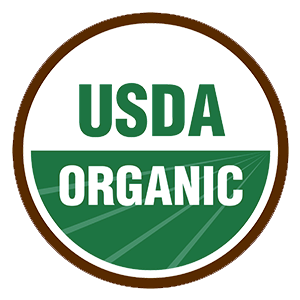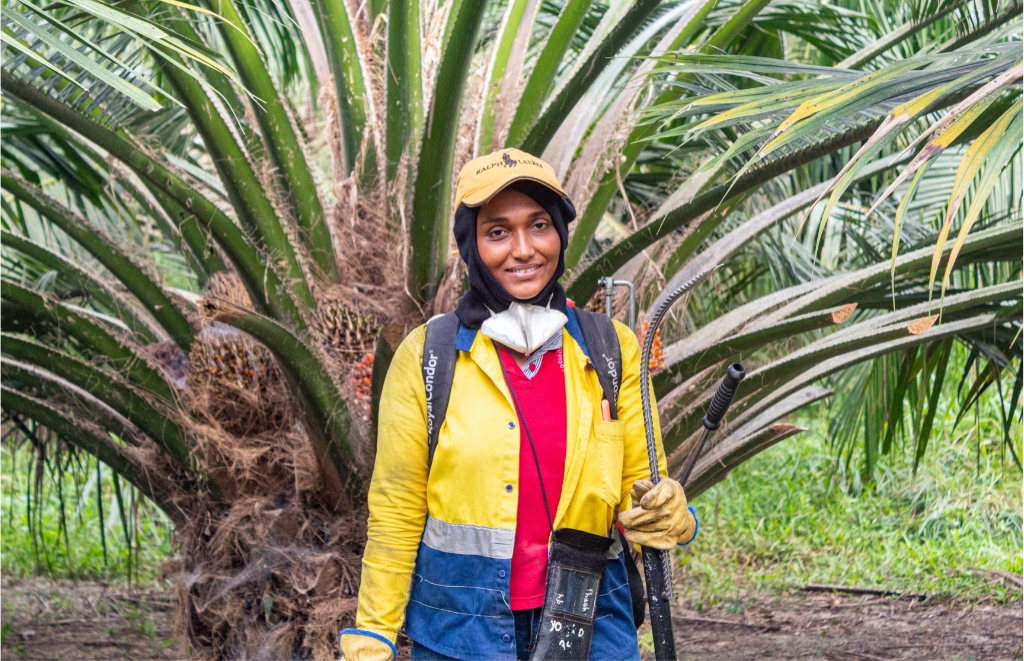Palm oil has a reputation problem. While it’s found in many foods and products, it’s also linked to deforestation and poor labor practices, especially in Southeast Asia. Certifications help change that—but not all certifications are created equal.
USDA Organic sets strong environmental rules. It bans synthetic fertilizers and promotes eco-friendly farming methods. This creates a solid foundation for sustainability in palm oil production. However, for companies and consumers aiming for deeper impact—especially around social fairness and ecosystem restoration—Regenerative Organic Certified (ROC™) builds on that foundation with additional standards that focus on soil health, labor rights, and holistic land management.
USDA Organic focuses on what goes into the product. ROC looks at the whole system: the land, the people, and the long-term impact. For palm oil, this matters. Many farms meet organic rules but still cause harm to nature or people. ROC changes that.
In this article, you’ll learn about USDA Organic and ROC —and why when combined becomes the gold standard for ethical palm oil.
The Foundation: What USDA Organic Ensures in Palm Oil

USDA Organic is the first step toward responsible palm oil. It bans synthetic fertilizers, pesticides, and genetically modified organisms (GMOs). This protects nearby ecosystems and promotes cleaner farming methods.
Soil health is a key focus. Organic farmers use compost, cover crops, and crop rotation. These practices help keep soil rich and reduce erosion. They also avoid chemical runoff into rivers and forests.
Organic certification also supports biodiversity. Farmers grow different crops and use natural pest control. This creates a healthier farm environment and supports pollinators, birds, and other wildlife.
But USDA Organic has limits—especially when applied to palm oil.
There’s no rule against deforestation before certification. A farm could clear a forest, then apply organic methods. That still earns the USDA Organic label.
Labor rights are not part of the standard. Workers may not get fair wages or safe conditions. And animal welfare rules don’t apply unless animals are part of the farm system.
USDA Organic focuses on inputs—not the bigger picture. It tells you what’s not in your food. But it doesn’t guarantee the land is healing or the people behind the product are treated fairly.
That’s why many brands are looking beyond organic. They’re choosing Regenerative Organic Certified (ROC™) in Palm Oil—a label that promises more than just clean ingredients.
ROC’s Three Pillars: Raising the Bar for Sustainability

Regenerative Organic Certified (ROC™) in Palm Oil isn’t just about what goes into a product. It’s about how the land is treated, how people are respected, and how ecosystems are restored. ROC sets a higher bar by combining three powerful pillars: soil health, social fairness, and animal welfare.
1. Regenerative Soil Practices
Healthy soil is the heart of regenerative farming. ROC farms use cover crops, composting, and minimal tillage. These practices build rich, living soil that holds water and stores carbon.
Palm oil production under ROC includes agroforestry. Trees and other crops are planted alongside palms. This mimics natural systems and helps restore damaged land.
Soil health isn’t just a nice idea—it’s measured. ROC standards require real improvements in soil life and structure over time. The goal is to leave the land better than it was.
2. Social Fairness and Labor Rights
ROC ensures that people come before profits. It requires living wages, safe work conditions, and complete bans on child or forced labor.
Farmers under ROC get fair pricing and long-term partnerships. This creates economic stability and helps them invest in their communities.
It also promotes worker empowerment. Through collective bargaining and training, ROC builds stronger, more resilient farming systems—especially in palm oil regions often overlooked.
3. High Animal Welfare Standards (When Applicable)
Even in palm oil, animals can play a role. Some farms use animals for grazing or transport. ROC steps in with strict rules to protect them.
The Five Freedoms of animal welfare are enforced. This means animals must be free from hunger, pain, and fear—and able to express natural behaviors.
CAFOs (confined animal feeding operations) are completely banned. Even when animals aren’t central to production, ROC makes sure they’re treated with dignity.
Together, these three pillars make Regenerative Organic Certified (ROC™) in Palm Oil more than a label. They turn palm oil into a force for healing—of soil, communities, and ecosystems.
Regeneration Over Conservation: Environmental and Biodiversity Impact
Conservation protects. Regeneration heals. That’s the shift ROC brings to palm oil. Instead of just limiting harm, Regenerative Organic Certified (ROC™) in Palm Oil aims to improve the land, restore wildlife habitats, and lock more carbon into the soil.
ROC-certified farms must avoid deforestation—period. They can’t clear primary forests or disrupt natural ecosystems. Instead, they’re encouraged to reforest, build biodiversity corridors, and grow diverse crops. This turns palm plantations into living landscapes, not monocultures.
Carbon sequestration is a core goal. ROC farmers use techniques that pull carbon from the air and store it in soil and trees. Over time, this creates a net-positive impact on the climate.
One powerful example is DAABON, a regenerative leader based in Colombia. This ROC-aligned palm oil producer has revived degraded land without resorting to deforestation. Instead of growing only palm, DAABON integrates agroforestry systems—planting cassava, cocoa, and native crops alongside palm trees. This approach supports biodiversity and helps stabilize the local environment.
But the impact goes beyond nature. DAABON also provides fair wages, safe working conditions, and long-term economic opportunities for local communities. Their model shows that regeneration isn’t just possible—it’s practical and profitable.
This is the promise of regenerative certification. It goes beyond protecting nature. It helps rebuild it.

Practical Impacts on Supply Chains and Certification
DAABON, one of the few palm oil producers to achieve ROC Gold certification, demonstrates how regeneration can happen at scale—without compromising on ethics, ecology, or economics.
Regenerative Organic Certified (ROC™) in Palm Oil transforms how supply chains work. It’s not just about meeting new standards—it’s about building new systems that value transparency and trust.
Traceability is non-negotiable. ROC-certified palm oil must be kept separate from conventional or organic-only batches. This means tighter controls during transport, storage, and processing. Brands must know where their oil comes from—down to the farm.
Relationships matter more than ever. ROC promotes long-term partnerships between producers and buyers. It’s about shared goals, not spot purchases. This helps ensure a steady supply while aligning values on regeneration and fairness.
But meeting ROC standards isn’t simple—or cheap.
Certification involves layered audits across organic, labor, and animal welfare practices. Each area must meet strict rules. Farmers need training, and brands need strong documentation.
Costs are higher. Living wages, regenerative inputs, and biodiversity projects all add to expenses. Logistics may also be more complex, especially with limited supply.
To help with adoption, ROC offers a tiered system—Bronze, Silver, and Gold. This gives producers a path to scale up their efforts over time. It’s not all-or-nothing. It’s progress over perfection.
For companies that care about impact, these changes are worth it. ROC-certified supply chains deliver more than palm oil—they deliver trust, transparency, and transformation.
Consumer Perception and Market Potential
Today’s shoppers don’t just read labels—they research them. That’s why trust is everything. Regenerative Organic Certified (ROC™) in Palm Oil gives brands a powerful way to prove they’re doing more than talking about sustainability—they’re living it.
ROC signals integrity. It means your palm oil meets strict standards for ethics, ecology, and regeneration. This appeals to consumers who care about how their choices impact people and the planet.
It also protects brands from greenwashing. While some labels make vague claims, ROC is backed by layered audits and clear requirements. That helps you stand out in a crowded market where everyone says they’re “sustainable.”
But with all its strength, ROC isn’t as familiar as USDA Organic—yet.
Consumer awareness of the ROC label is still growing. That means brands need to tell the story. Show the behind-the-scenes work. Explain what ROC stands for and why it matters.
Premium pricing is another challenge. ROC-certified products often cost more. That can limit reach—but it also creates value. In return, your brand builds deeper loyalty and stronger differentiation in premium markets.
For early adopters, ROC is more than a label—it’s a leadership move. You’re not just following trends. You’re setting them.
Why Regenerative Organic Certified Palm Oil Matters
USDA Organic is the starting point—but it’s not the finish line. When it comes to truly responsible sourcing, Regenerative Organic Certified (ROC™) in Palm Oil offers a more complete solution. It doesn’t just avoid harm. It builds healthier soil, stronger communities, and more resilient ecosystems.
Yes, the path to ROC is challenging. But companies like DAABON prove it’s possible—and profitable. With over a century of experience and a deep-rooted commitment to people and planet, DAABON is redefining what ethical palm oil can be.
This is the future of palm oil: regenerative, transparent, and fair. Brands that align with ROC standards today won’t just meet consumer demand—they’ll lead it.
Now is the time to go beyond organic. By choosing ROC-aligned partners like DAABON, you help shift the palm oil industry toward real change. One that regenerates the Earth, uplifts workers, and delivers products with purpose.
Let’s raise the standard—together.

